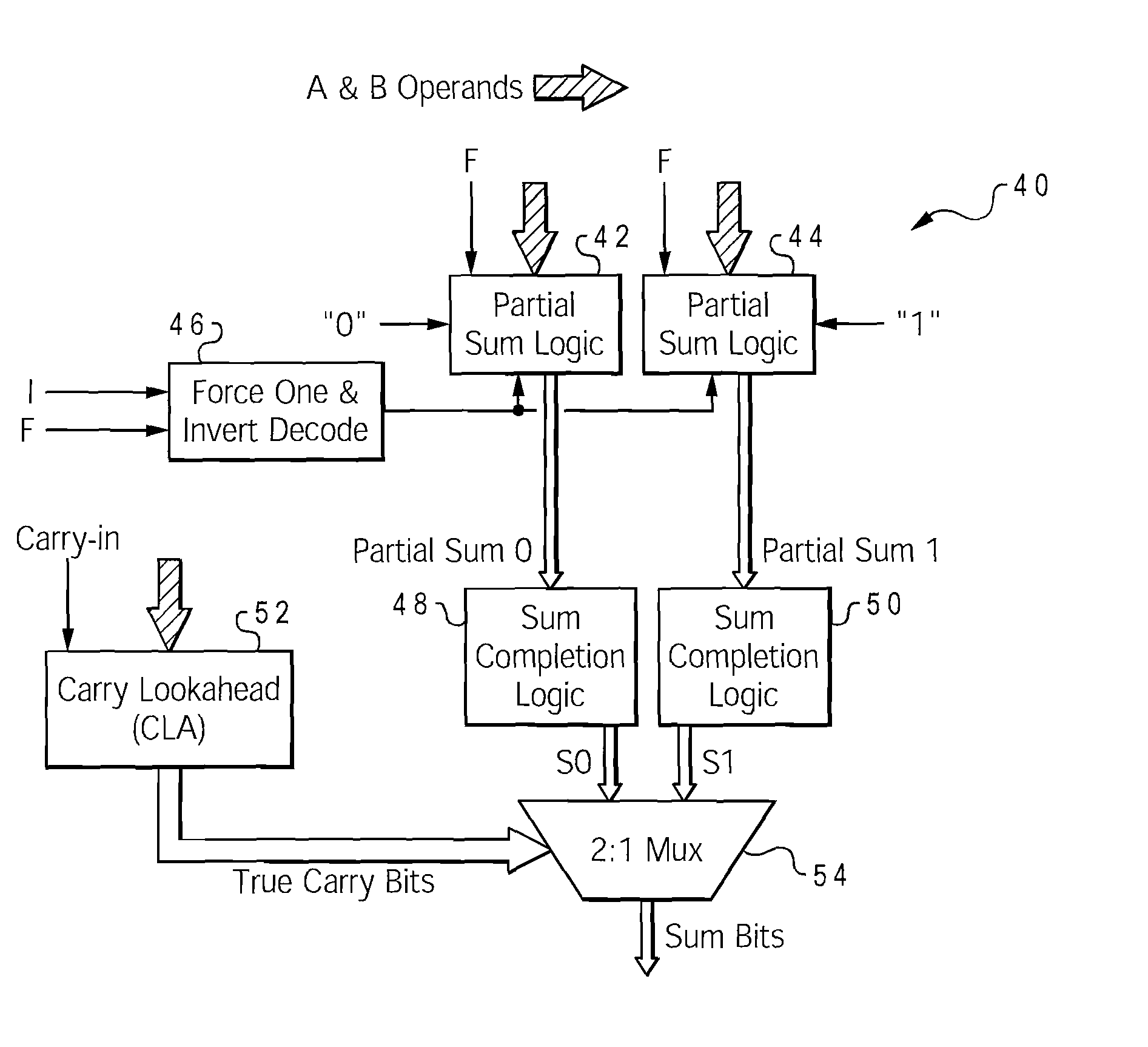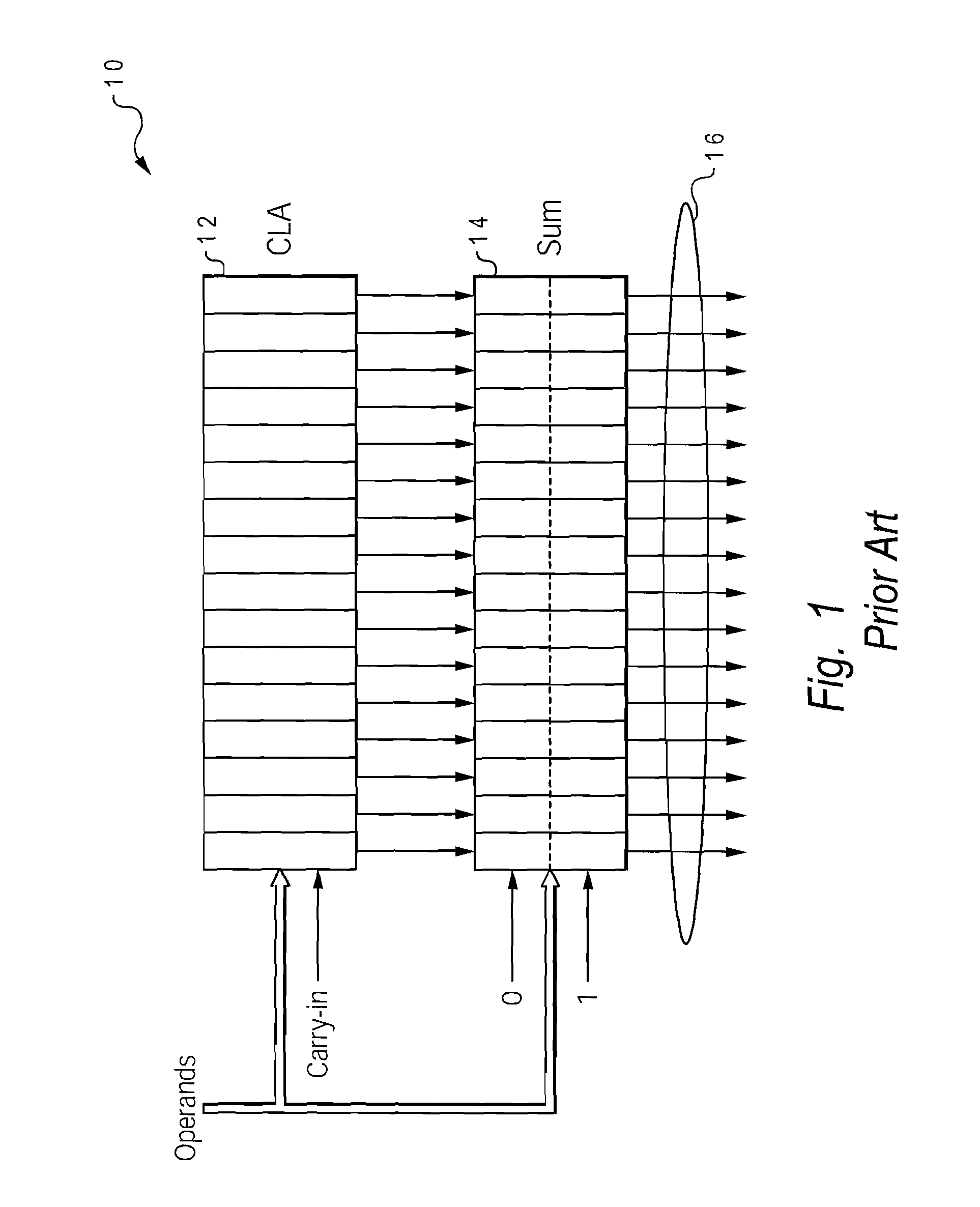Method of forcing 1's and inverting sum in an adder without incurring timing delay
a technology of adder and sum, applied in the field of digital logic circuits, can solve the problems of consuming much more power than ripple adder, fast adder, and large adder, and unduly increasing the area and power of the adder design
- Summary
- Abstract
- Description
- Claims
- Application Information
AI Technical Summary
Benefits of technology
Problems solved by technology
Method used
Image
Examples
Embodiment Construction
)
[0023]With reference now to the figures, and in particular with reference to FIG. 3, there is depicted one embodiment 40 of a summing circuit constructed in accordance with the present invention. Summing circuit 40 may comprise a 4-bit sum block that is part of a larger (e.g., 64-bit) adder. The adder so constructed may further be incorporated into a wide variety of digital logic circuits, such as execution units used by a microprocessor to operate the software programs running on a computer system (including floating-point units, fixed-point, branch units, etc.). Those skilled in the art will appreciate, however, that the use of adders is widespread throughout logic circuits and the present invention is not limited to use in execution units or general purpose data processing systems.
[0024]Summing circuit 40 is generally comprised of partial sum logic 42 and 44, force one and invert decode logic 46, sum completion logic 48 and 50, carry lookahead (CLA) block 52, and a 2:1 multiplex...
PUM
 Login to View More
Login to View More Abstract
Description
Claims
Application Information
 Login to View More
Login to View More - R&D
- Intellectual Property
- Life Sciences
- Materials
- Tech Scout
- Unparalleled Data Quality
- Higher Quality Content
- 60% Fewer Hallucinations
Browse by: Latest US Patents, China's latest patents, Technical Efficacy Thesaurus, Application Domain, Technology Topic, Popular Technical Reports.
© 2025 PatSnap. All rights reserved.Legal|Privacy policy|Modern Slavery Act Transparency Statement|Sitemap|About US| Contact US: help@patsnap.com



